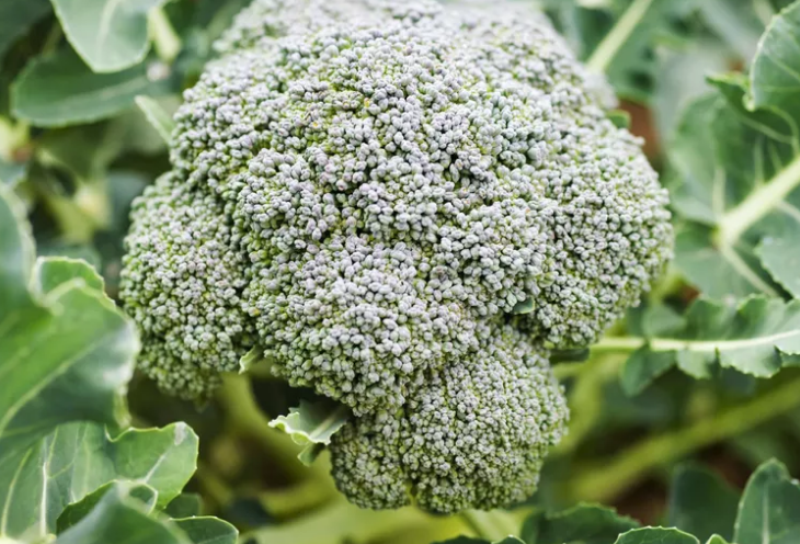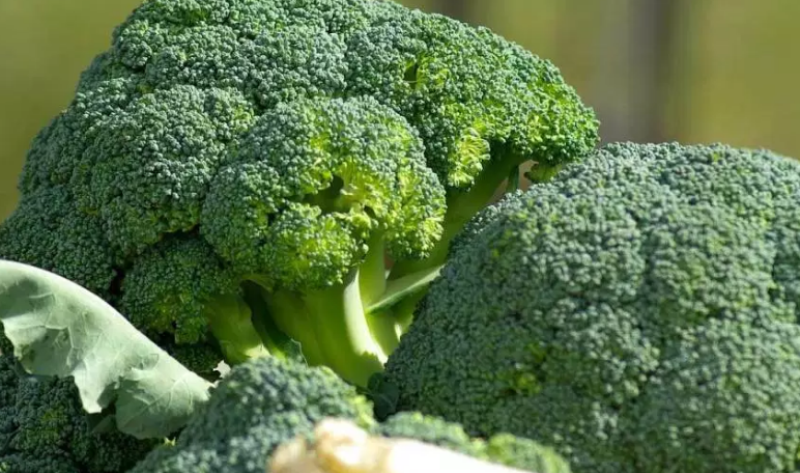
Broccoli is a cool-season crop that is best grown in the spring. It is a very healthy vegetable and is called 'crown jewel of nutrition'. There are numerous health benefits of broccoli. The vegetable is rich in vitamins, minerals and is a good source of Vitamin A, potassium, folic acid, iron, and fiber. Once the main head of a broccoli plant is harvested, it will often keep producing smaller side shoots that can be enjoyed for months to come. Excessive summer heat can cause bolting, so broccoli is best grown in the cooler spring and fall seasons.
Planting of Broccoli
-
Broccoli requires full sun and moist fertile soil that’s slightly acidic for its cultivation.
-
Before planting broccoli in early spring, work in 2 to 4 inches of rich compost or a thin layer of manure before planting.
-
Directly sow broccoli seed in the ground once the soil is at least 40°F. This is done 2 to 3 weeks before the last spring date.
-
Seed should be planted half inch deep and three inches apart.
-
You can also set out transplants with 4 or 5 leaves, about 2 to 3 weeks before the last spring frost date and they should be 12 to 20 inches apart, in holes that should be slightly deeper than their container depth.
-
Space rows at 36 inches apart.
-
Make sure that you water well.
-
Plants flourish outdoors in 65°F to 70°F conditions.
-
For fall plantings, direct sow broccoli 85 to 100 days before the first fall frost, when soil and ambient temperatures are high.
CARE AND MANAGEMENT OF BROCCOLI
-
After transplanting seedlings into the garden, fertilize broccoli till three weeks.
-
Use fertilizer that is low nitrogen .
-
In drought conditions, provide consistent soil moisture with regular watering. Watering should be done at least 1 to 1 ½ inches per week.
-
Try not to disturb the plants because roots are very shallow.
-
Use Mulch because it will help to keep soil temperatures down.
-
To minimize pests, use row covers .
-
Maintain an active feeding and watering schedule, to promote the growth of a second head after the first has been harvested.
-
If you notice bottom, then top, leaves turn yellow, then add blood meal.
PESTS/DISEASES IN BROCCOLI
-
Aphids: If you see that leaves are getting curled, it may mean that the plant’s sap is being sucked by insects. You should apply soapy water to all sides of leaves whenever you see aphids.
-
Cabbage loopers: if you see small holes on the leaves between the veins mean small green caterpillars are present undersides of the leaves. To overcum this problem use Bacillus thuringiensis which is a natural bacterial pesticide. You should also use a floating row cover just after planting through harvest to prevent caterpillars.
-
Cabbage root maggots
-
Cabbage worms and other worm pests: Treat them same as loopers.
-
Club root: This is a type of fungus in the soil which causes wilting of plants. If the roots are misshapen, then clubroot is the problem. If you come across this type of disease, act quickly to remove the plants so that the fungus doesn’t continue to live in the soil. pH of your soil should be raised to above 7.2.

-
Downy Mildew: Yellow types of patches on leaves are usually caused by moist weather. To overcome this problem keep leaves as dry as possible with good air circulation.
-
White rust
-
Whiteflies
-
Nitrogen deficiency: If you see that the bottom leaves turn yellow and the problem continues toward the top of the plant, then the plants need a high nitrogen but low phosphorus fertilizer or blood meal. For yellowing leaves, blood meal is a quick nitrogen fix .
HARVEST/STORAGE OF BROCCOLI
HARVESTING
-
Harvest broccoli in the morning time
-
Harvest broccoli before it heats up when the buds of the head are firm and tight, just before the heads flower.
-
If you find yellow petals, harvest broccoli immediately because it will decrease quality rapidly.
-
The perfect way to harvest is to cut heads from the plant, taking at least 6 inches of stem. Make sure you make a slanted cut on the stalk to allow water to slide away.
-
Most of the varieties have side-shoots that will continue to develop after the main head is harvested.
STORAGE OF BROCCOLI
-
You can store broccoli in the refrigerator for up to 5 days.
-
Do not wash before storing. If you wash before storing, make sure to dry it thoroughly.
-
Broccoli can be frozen for up to one year.
-
You can store broccoli in the refrigerator for up to 5 days.
-
Do not wash before storing. If you wash before storing, make sure to dry it thoroughly.
-
Broccoli can be frozen for up to one year.











